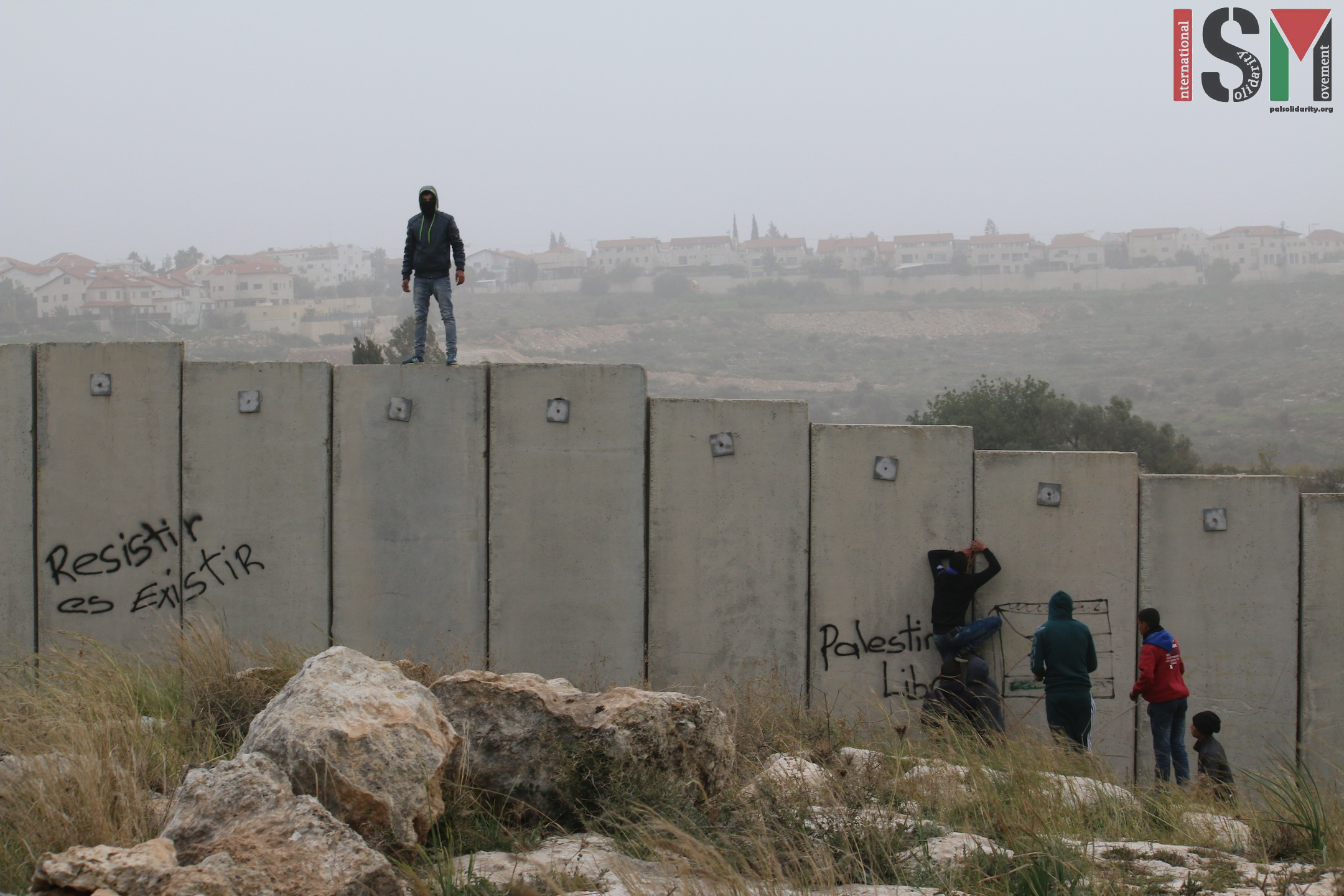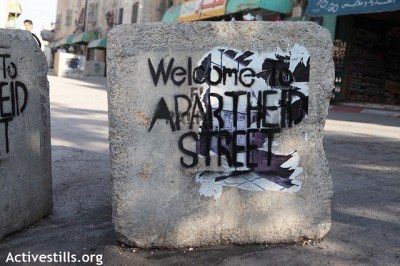Tag: Apartheid Wall
-
Life inside the Shuafat Refugee Camp, East Jerusalem
January 18th 2016 | International Solidarity Movement, Ramallah Team | East Jerusalem, occupied Palestine A few days ago, the ISM went to the Shuafat Refugee Camp to learn about the situation and living conditions for its Palestinian residents. Built in 1965 with the aim of relocating the Palestinians who were living in the Moroccan Quarter…
-
Weeks of repression and resistance in Ni’lin
15th January 2016 | International Solidarity Movement, Ramallah team | Ni’lin, occupied Palestine A walk through the olive groves of Ni’lin village, down the dirt road between stone walls and cacti and past the scattered remnants of spent tear gas canisters, grenades and bullet casings reveals a striking vista: the Israeli-constructed, illegal Apartheid Wall cuts sharply across…
-
ACT NOW ! Put an end to the ‘Closed Military Zone’ in Tel Rumeida and Shuhada Street, Hebron
11th January 2016 | Action Alert last updated 21st January 2016 *** Arabic version below *** The undersigned organisations are calling on the international community to take immediate action regarding the continuous closure of the Tel Rumeida neighborhood and the part of Shuhada Street that has remained accessible to Palestinian residents since the Ibrahimi…



